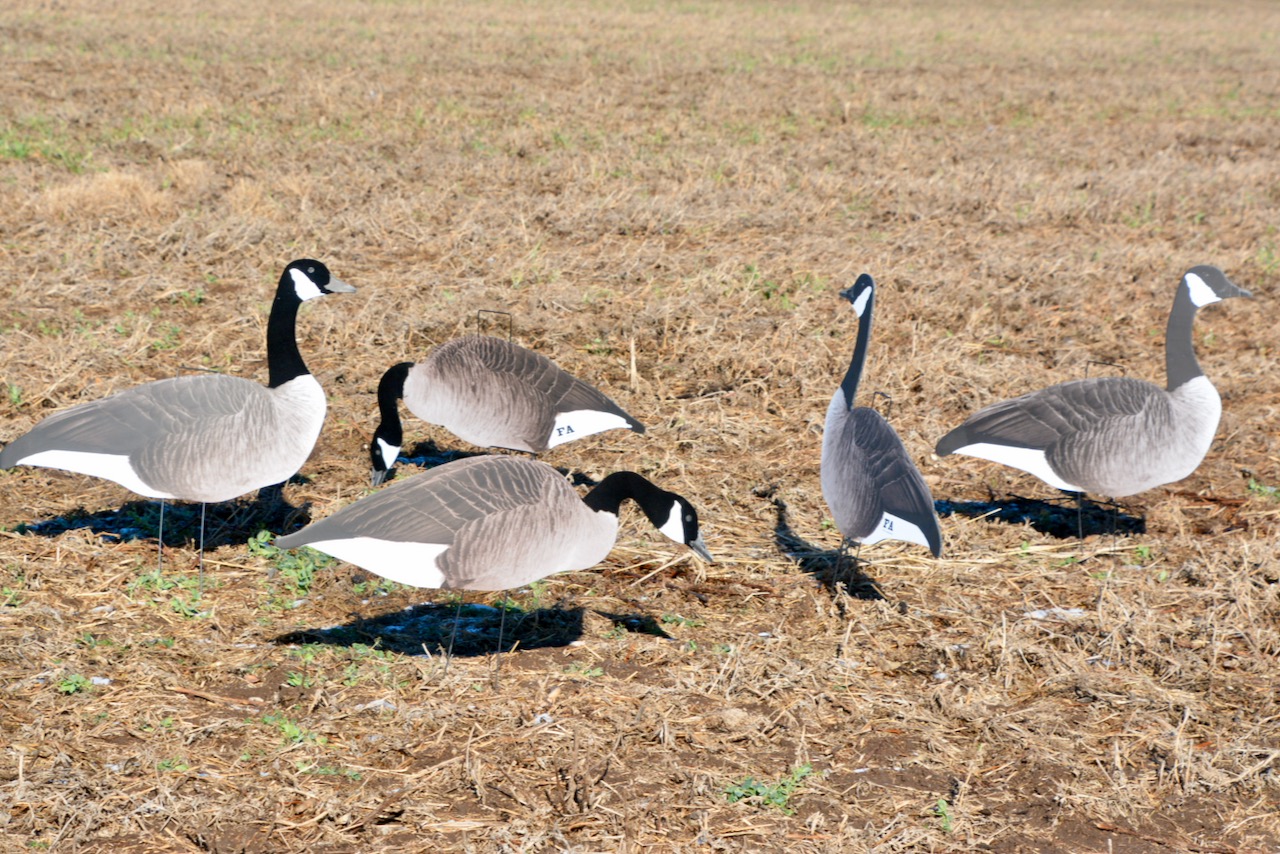THE SILO EDGE
For deadly duck and goose spreads, use silhouette decoys
Advertisement
When I first started guiding waterfowlers in the late 1980s, the other guides and I made our own silhouette decoys to supplement our field and pothole rigs. We cut them from quarter-inch plywood in the shapes of ducks and geese, and painted them with flat-black barbecue paint. I wasn’t aware of any factory-made silhouettes at the time.
As decoy styles and materials evolved, however, I eventually stopped using silhouettes and changed my spreads to align with the trends. Then about five years ago, silhouette decoys began to reappear, albeit as factory-made versions. Today, they’re a meaningful part of every serious field set-up.
Advertisement
Commonly referred to as “silos” (short for silhouettes), these decoys are far more lifelike than the homemade imitations we used decades ago thanks to digital-image transferring processes, and realism is the very cornerstone of effective decoying. They are also less than half the price of shell or full-bodied decoys, selling for around $125 a dozen. The benefits don’t stop there, however.
THE SILO ADVANTAGES
One of the greatest advantages of silhouettes is how easy they are to pack. Being flat, they stack easily, and you can fit five or six dozen into a bag that would only hold a couple dozen shells or a half-dozen full-bodied dekes at most. That makes them ideal for packing into a wet field when vehicles aren’t a practical option. And since five or six dozen decoys are often sufficient for a hunt, you can simply toss a single bag of silos into the back of a pickup or SUV, eliminating the need (and cost) of a dedicated decoy trailer.
Advertisement
Unlike the other decoys, silos are also quick and easy to set out and pick up, eliminating one of the banes of goose hunting. I mean, who wouldn’t want the extra half-hour’s sleep? The best models have wire inserts serving as handles, making it easy to carry two dozen at a time. Plus, you can push them into the ground as though they were garage sale signs; the stiff wire stakes easily penetrate even partially frozen soil. And if you need to pick up your spread and move, or make adjustments, it’s ridiculously easy.

Silhouette decoys even impart motion, or perceived motion, to your spread. The decoys themselves don’t move, of course, but overhead birds will only see those decoys that are perpendicular to their flight path, not the ones that are parallel. So as the birds approach, some silos will disappear from their vision while others emerge, giving the impression of a moving, feeding flock. That’s a distinct advantage over shells and full-bodies, which are inert and always in view from all angles.
WHEN TO USE SILOS
Can you hunt using silhouettes only? At times, yes. For experienced, cautious waterfowl, I’ve found that running a spread of shells and full-bodies, as most hunters do, can make the birds distrustful; using silhouettes only instead can lead to success. A mix of the different decoy styles can also be effective. For example, Mario Friendly uses silos to supplement his shells and full-bodies when he wants a giant spread.
“I really like the silhouettes when I don’t have enough full-bodies, or when I need to set up quickly,” says the vice-president of brand innovation for Final Approach. “I also like them when a mixed-species spread is warranted; I’ll use silos to add snows or specks to a Canada goose hunt when I’ve seen a few of those other species in the area.”
Friendly says he also finds silhouettes handy in the spring for snow geese as a supplement to his sock decoys. “I put the silhouettes at the front of the kill hole or by the blinds,” he says. “They really seal the deal in getting birds to finish.”
Finally, I’ve also had great success with silos when hunting ducks over water, especially on smaller waterbodies. A dozen Canada goose silhouettes along the shoreline or in the shallows serve well as confidence decoys, helping convince suspicious ducks that all is fine.
I won’t say that silhouettes perform as well as shells or full-bodied decoys in all situations, but if you want to keep costs down and avoid storage and transportation challenges, you can certainly do well with just a few dozen—and still join in on the action.
